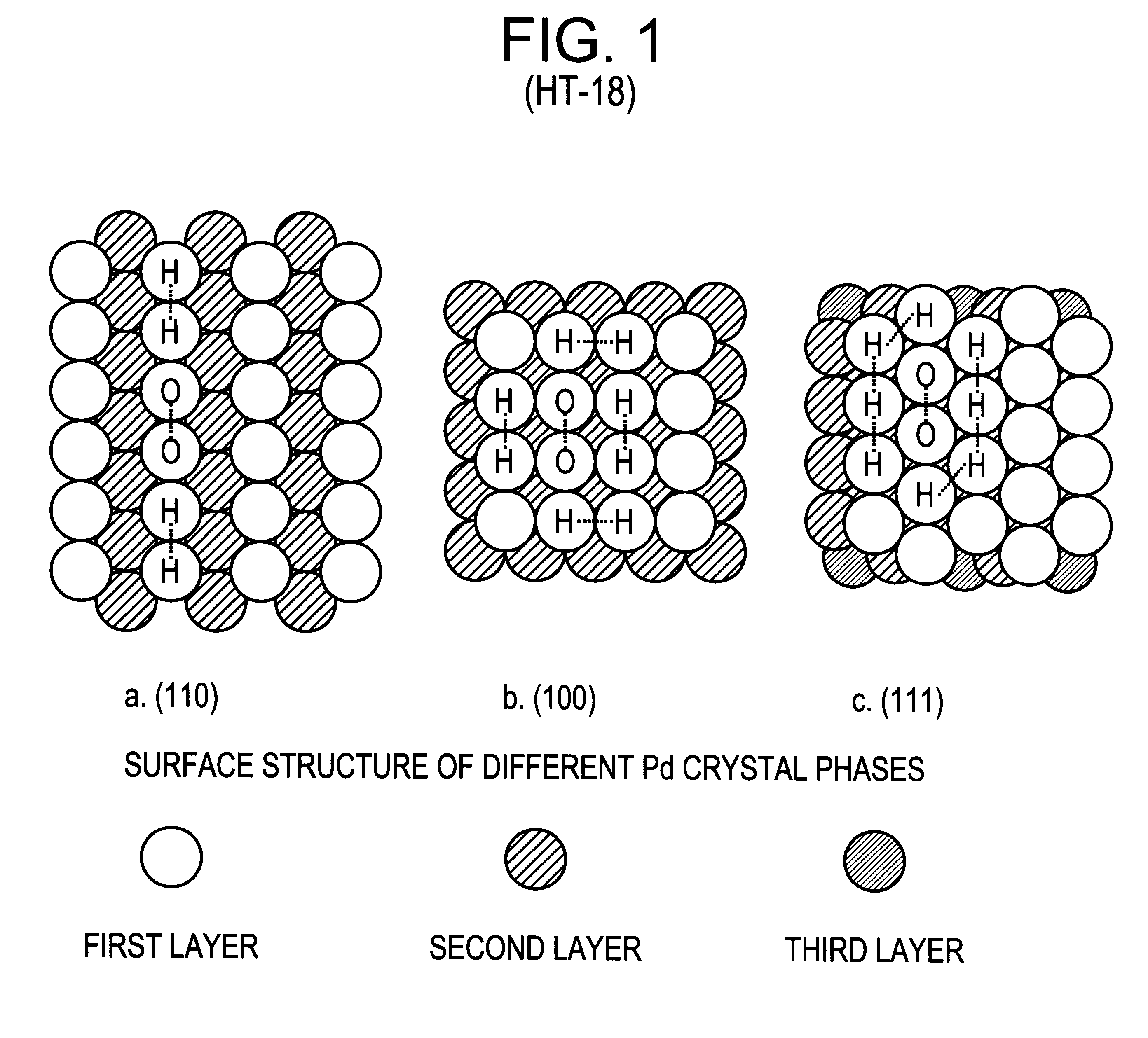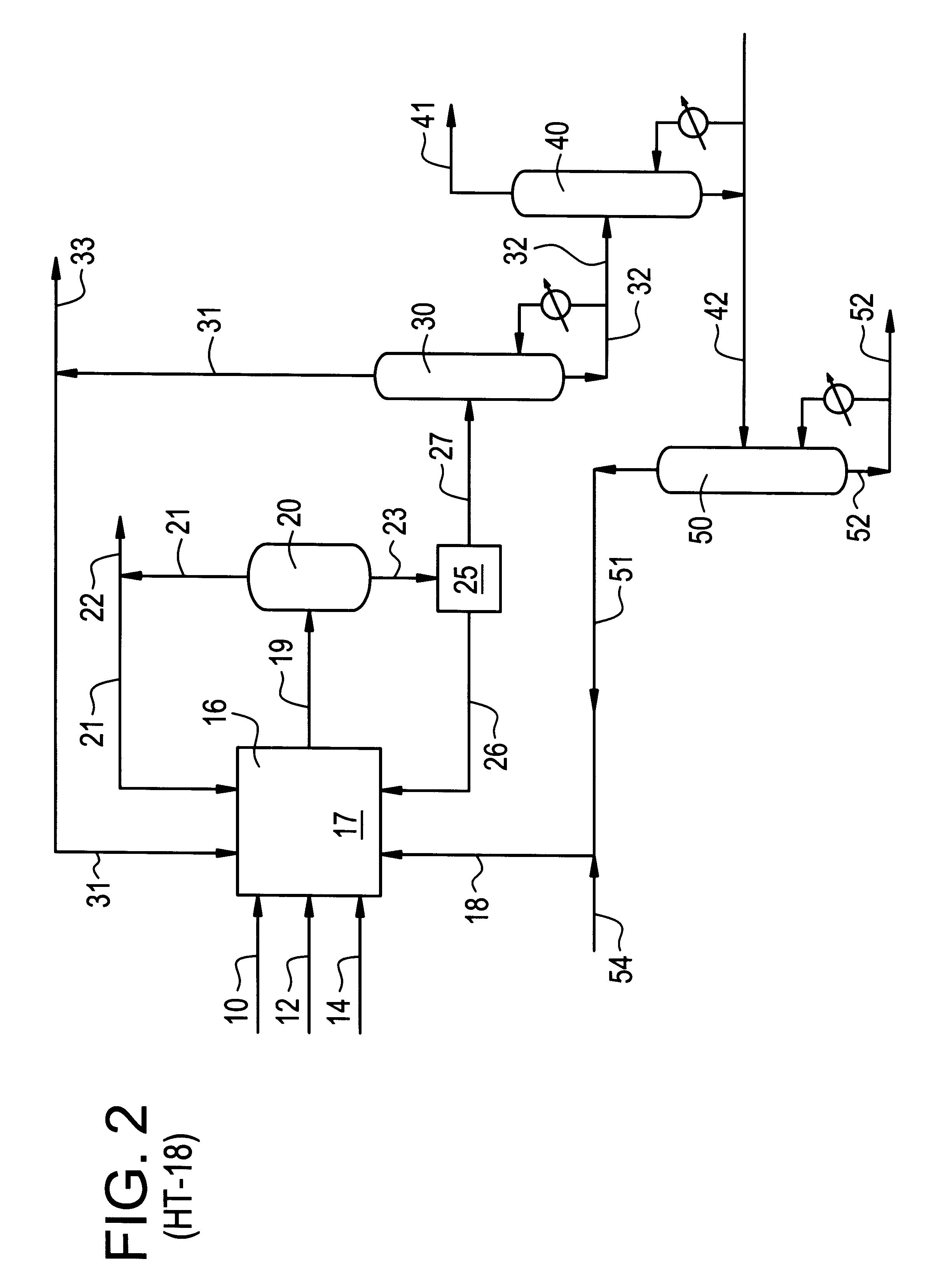Integrated process and dual-function catalyst for olefin epoxidation
a technology of olefin epoxidation and integrated process, which is applied in the direction of physical/chemical process catalysts, metal/metal-oxide/metal-hydroxide catalysts, bulk chemical production, etc., can solve the problems of high capital investment cost, increased complexity of current process, and high equipment counts, and achieves stable structure, high surface area, and high activity.
- Summary
- Abstract
- Description
- Claims
- Application Information
AI Technical Summary
Benefits of technology
Problems solved by technology
Method used
Image
Examples
example 1
Preparation of the Dual-functional Catalyst
Without restricting the scope of this invention, the following provides an illustrative example of a suitable catalyst preparation method or procedure. Palladium chloride is dissolved in a 0.4 wt % hydrochloric acid aqueous solution to form a first solution. A second solution, consisting of sodium polyacrylate in aqueous solution, is added to the first solution, providing a metal to ionic polymer molar ratio in the preferred range of 1:0.5 to 1:5. A third solution of chloroplatinic acid is added to the combined first and second solution to provide a palladium to platinum molar ratio of 20:1 to 100:1. The combined solution is then purged with nitrogen flow for 1 hr, and then reduced by hydrogen flow for 20 minutes. The resulting solution constitutes the precursor solution. The selected zeolitic substrate, such as TS-1 in a powder form, is mixed into the precursor solution. After the substrate becomes impregnated with the solution, the substr...
example 2
The dual-functional catalyst is advantageously used in an integrated process for the one-step synthesis of propylene oxide product from hydrogen oxygen, and propylene feeds. However, as will be apparent to those skilled in the art, the invention is not limited to the synthesis of propylene oxide. Olefins in general and mixtures of olefins may be used for epoxidation by the process of the invent, including C2-C20 olefins, substituted or unsubstituted with groups such as halogen, hydroxy, carboxy and the like.
A schematic flowsheet of an integrated process of the invention for propylene oxide production is depicted in FIG. 2. Hydrogen feed is provided at 10, and will preferably consist of a purified form of hydrogen, although it may also consist of a gaseous mixture containing hydrogen, such as synthesis gas, refinery off-gas, or the like. Oxygen feed is provided at 12, which may comprise purified oxygen, air, or enriched air. The optimal choice of the oxygen-contain...
PUM
| Property | Measurement | Unit |
|---|---|---|
| Fraction | aaaaa | aaaaa |
| Fraction | aaaaa | aaaaa |
| Fraction | aaaaa | aaaaa |
Abstract
Description
Claims
Application Information
 Login to View More
Login to View More - R&D
- Intellectual Property
- Life Sciences
- Materials
- Tech Scout
- Unparalleled Data Quality
- Higher Quality Content
- 60% Fewer Hallucinations
Browse by: Latest US Patents, China's latest patents, Technical Efficacy Thesaurus, Application Domain, Technology Topic, Popular Technical Reports.
© 2025 PatSnap. All rights reserved.Legal|Privacy policy|Modern Slavery Act Transparency Statement|Sitemap|About US| Contact US: help@patsnap.com


